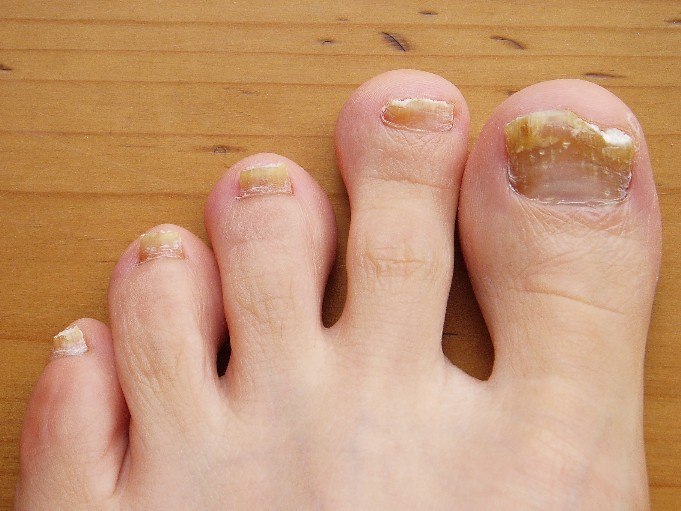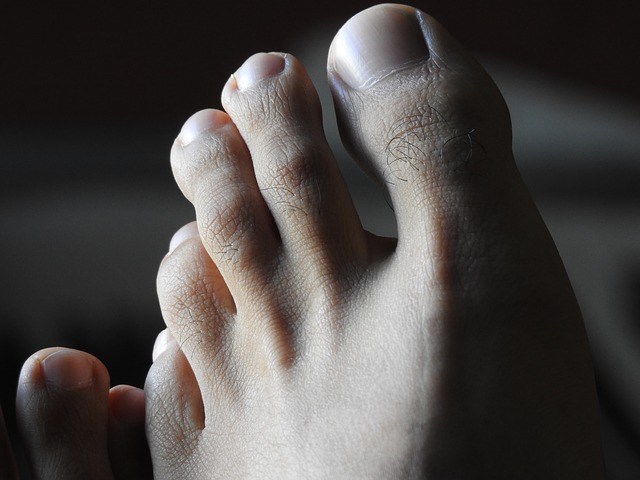Color change on any part of the human body rarely signifies a good thing. If your toenails have experienced serious discoloration as of late, is it a warning to your overall health?
Usually, this is not just a symptom of improper foot care, but actually a fungus. A fungus living on your body, even your toenail, is not something to go untreated – even if you feel it’s harmless.
But therein lies the question: Will untreated toenail fungus kill you?

The short answer is, no, toenail fungus alone cannot kill you. However, that doesn’t make it benign. After all, a fungus may be indicating more grave health issues.
It can also lead to other conditions that are life-threatening, such as severe cellulitis, which is an infection of the soft tissue. This goes doubly so for people with diabetes or HIV/AIDs.
Untreated toenail fungus can grow out of control, potentially spreading to other available areas of your skin and nails due to its contagious nature. This increases your chance of severe nail fungal infections that can be painful and even lead to permanent damage or loss of the nail.
Now, doesn’t that sound terrifying? But worry not! We’re here to break down all you need to know about untreated fungus, along with tips on how to identify it early and treat it on time.
Contents
Is Toenail Fungus Dangerous?
Identification
The first sign of toenail fungus is a yellow discoloration of the nail that leads to white or black specks.
It won’t hurt at this stage, which is often why people ignore it. However, it will progress to a later stage, where pain begins to take effect as the fungus makes the nail brittle.
If you’re unsure about the discoloration and think it may not be toenail fungus, consider your daily activities.
Do you spend a lot of time in sweaty socks or damp areas without proper foot protection? As these warm, humid areas are a breeding ground for fungus, your chances are very high of contracting it.
If you’re still unsure, consider visiting your doctor.
Untreated Toenail Fungus
Fungus is an organism that feeds on dead organic matter. While some only grow on dead organisms, others are parasitic in nature, harming the host to benefit itself.
Onychomycosis or tinea unguium, the fungal infection that occurs on nails, is parasitic and feeds on the nail as well as surrounding skin. Nails and hair are dead cells that grow on the body to serve practical functions.
Hair follicles have a smaller surface and are typically not in contact with areas of possible infection, making nails the prime target for fungal growth.
Without treatment, the discoloration that typically starts at the front of the nail will grow towards the cuticle, resulting in the nail becoming thicker but flaky.

If it spreads to the surrounding skin, it will begin to peel and can result in cracks which put you at risk of infection.
This growth, if left untreated, will begin to “raise” the nail up from the bed and cause it to chip or break. At that point, some of the nail may break away and then regrow, or it can lead to a permanent loss that will not regrow.
One major risk is developing cellulitis, which swells the infected area.
Unlike a simple toenail infection, cellulitis is caused by bacteria, meaning antibiotics are required to stop it. Otherwise, it can enter the bloodstream and become a life-threatening condition.
Treatments
If you suspect your nail discoloration is a fungus, immediate treatment is the most effective way to avoid all the aforementioned conditions.
Some home remedies include apple cider vinegar, olive leaf extract, tea tree oil, baking soda or sodium borate, and probiotics.
If home remedies do not fix your problem, make an appointment with your doctor. They will likely take a sample (such as a nail clipping) for the laboratory to confirm it is a fungus, as it’s difficult for even trained professionals to identify on sight, especially if it’s still in an earlier phase.
Then, you’ll likely be given anti-fungal medications such as efinaconazole or tavaborole, which should be applied once a day for up to 48 weeks (or close to a year).
Oral medicines are also an option, like terbinafine, intraconazole, and fluconazole.
Prevention and Limiting Growth
The fungus may not kill you, but if it’s not quickly intercepted, treating it can be a long and tedious process.
To avoid this condition or to slow the growth as you treat it, keep your feet clean and dry. Wash your feet in the morning and night, and make sure to get between the toes.

If you go to the gym often, change your socks throughout the day. Have at least two pairs of shoes to switch out, so each has a chance to dry and air.
As a good measure, sprinkle some antifungal powder in your shoes and on your feet before putting on your socks.
Have you dealt with untreated toenail fungus?

